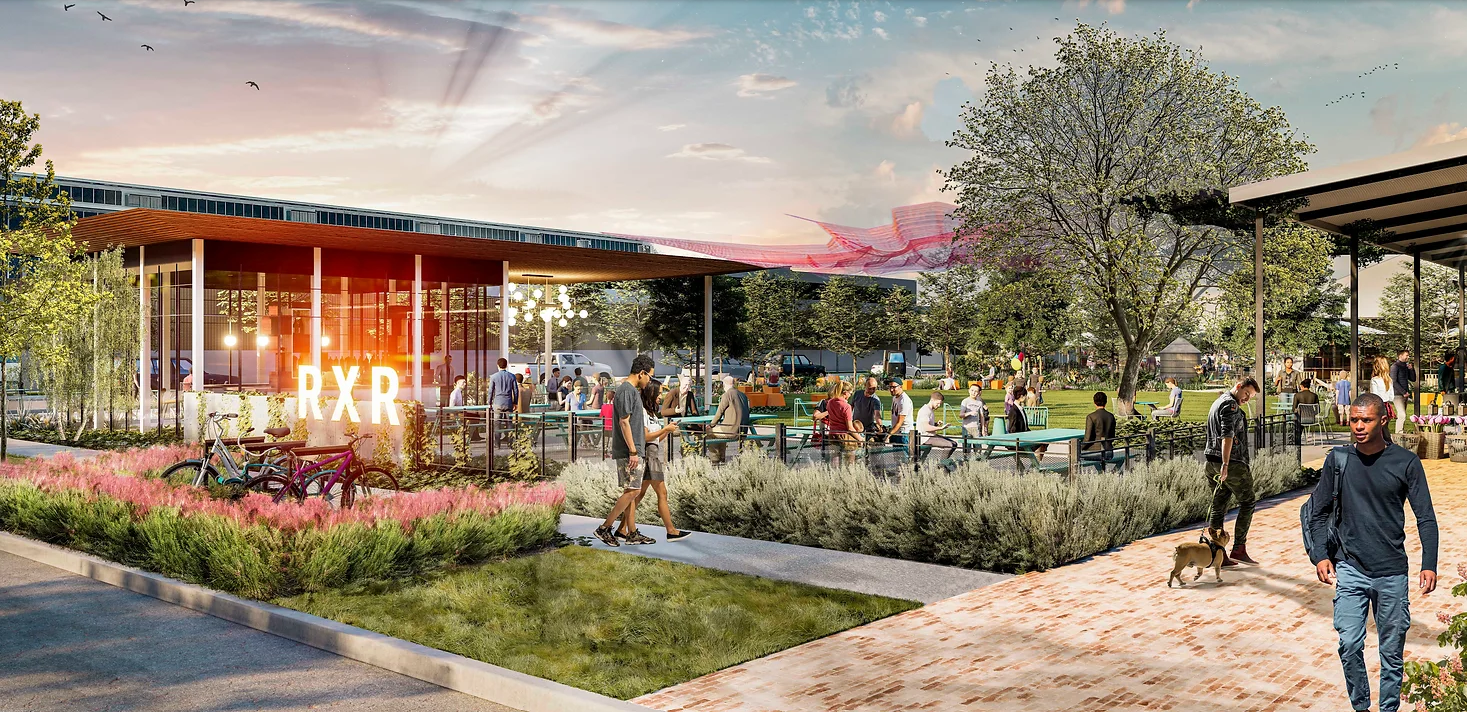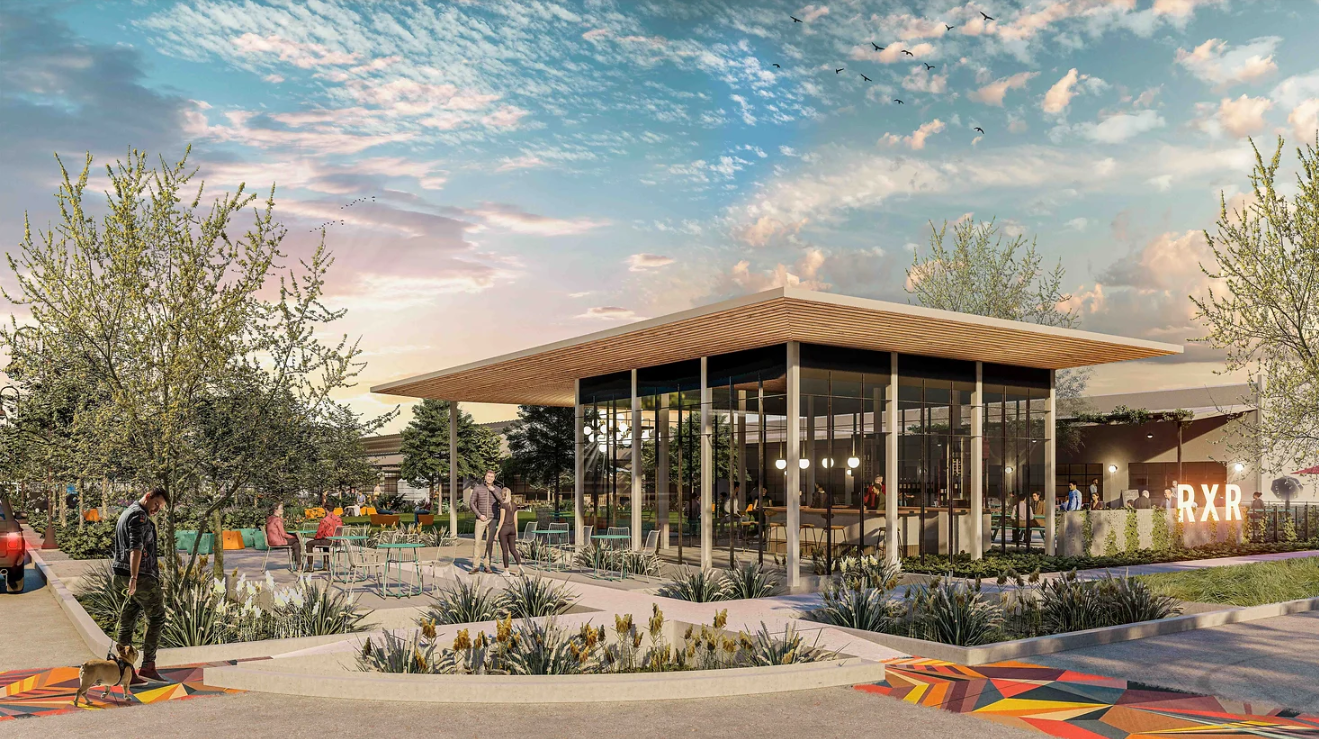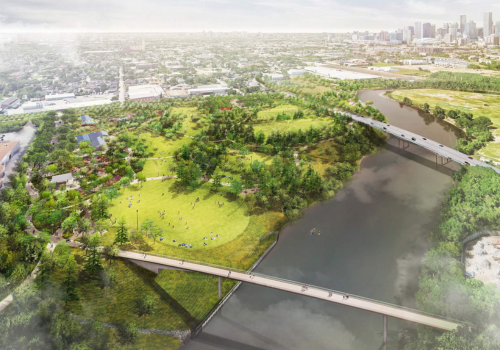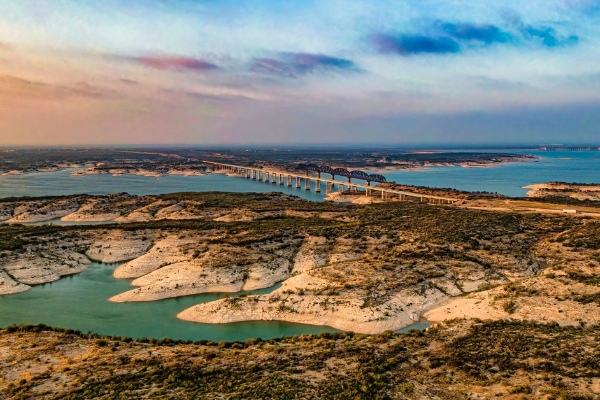Transforming Houston Neighborhoods into Walkable Districts
Published Feb 03, 2023 by Brina Morales
Building walkable districts — connecting workspaces, residences, and essential services by foot or transit options — is becoming increasingly popular as more people seek these types of developments. While Houston is known to be a car-centric city, developers and city leaders see the opportunity to transform neighborhoods into walkable urban places.
According to the 2023 Foot Traffic Ahead report, which examines the impact of walkable urbanism on U.S. real estate and metros, “the demand for walkable, well-connected real estate far exceeds supply.”
The report ranks the top 35 metropolitan areas by their walkable urbanism using an index that considers premiums in commercial rents, multifamily rental rates and for-sale home prices. Houston ranked 18th, ahead of Dallas and San Antonio, which ranked 27th and 34th, respectively. Austin ranked ahead all Texas cities, coming in at no. 14. The report also finds that walkable urbanism accounts for about 1.2 percent of the land within the 35 metro areas but generates almost 20% of the nation's gross domestic product.
The concept of walkable urbanism, building high-density neighborhoods that allow people to access most daily needs by walking or using transit options has been around for years, but the interest continues to grow both in cities and suburbs. The report states Houston, along with other cities grouped in the upper-middle walkable urbanism rankings, are now moving toward building areas that are more dense, walkable, and often connected via multiple transit options after being “dominated by drivable suburban development for a half century.”
Concept Neighborhood, a Houston-based development firm founded in 2020, is hoping to bring more of this development to our region. According to their website, “when done correctly and with intentionality, walkable urbanism has the potential to lower crime rates and greenhouse gas emissions while improving quality of life and community wealth in a socially equitable manner.”
The company is redeveloping a mile-long stretch of properties from Harrisburg Boulevard to Buffalo Bayou East in Houston’s East End and historic Second Ward. The Plant/Second Ward project includes 250,000 square feet of retail, creative office and urban maker space in addition to 1,000 multifamily units designed for market-based, workforce housing, according to the firm’s website. The Houston Chronicle reports that Concept Neighborhood’s vision has grown to encompass 17 acres after purchasing additional land from Union Pacific Railway and other property owners. Most of the properties sit along Roberts Street near MetroRail’s Green Line.
Houston is already home to a few walkable communities, including Rice Village and Midtown, but managing principals for Concept Neighborhood say they want to take a different approach by building around existing buildings or reimagining old buildings.
“We have good examples of these larger, mixed-use projects and the urban areas that have been redeveloped are thriving,” Jeff Kaplan, co-managing principal, recently told Houston Public Media. “But what we don’t have is a connected, walkable corridor where you have a series of old buildings and new density where you can sort of stumble around and feel like it’s a real, authentic place.” Concept Neighborhood has also said it wants to develop strategies that keep current small business owners and residents in their communities.
Other projects transforming the East End include Midway’s East River mixed-use development of 150 acres and Buffalo Bayou East, which will both serve as catalysts for change in the area.
In 2017, the City of Houston launched the Walkable Places Committee to examine how the city could encourage more walkable development opportunities. It led to the creation of the Walkable Places and Transit Oriented Development (TOD) rules in 2020. The ordinances encourage combined commercial, office, and multifamily residential developments to create more vibrant, walkable streets that support alternative modes of transportation, and help achieve the goals of the Houston Climate Action Plan as well as other initiatives.
While Houston looks for ways to improve mobility options and create a more equitable, walkable city, the 2023 Foot Traffic Ahead report states stakeholders, leaders, policymakers and the community should work together to accomplish this goal which will ultimately lead to improving quality of life and economic opportunity for all.
Learn more about Houston neighborhoods and quality of life.
 The Houston Report
The Houston Report






















